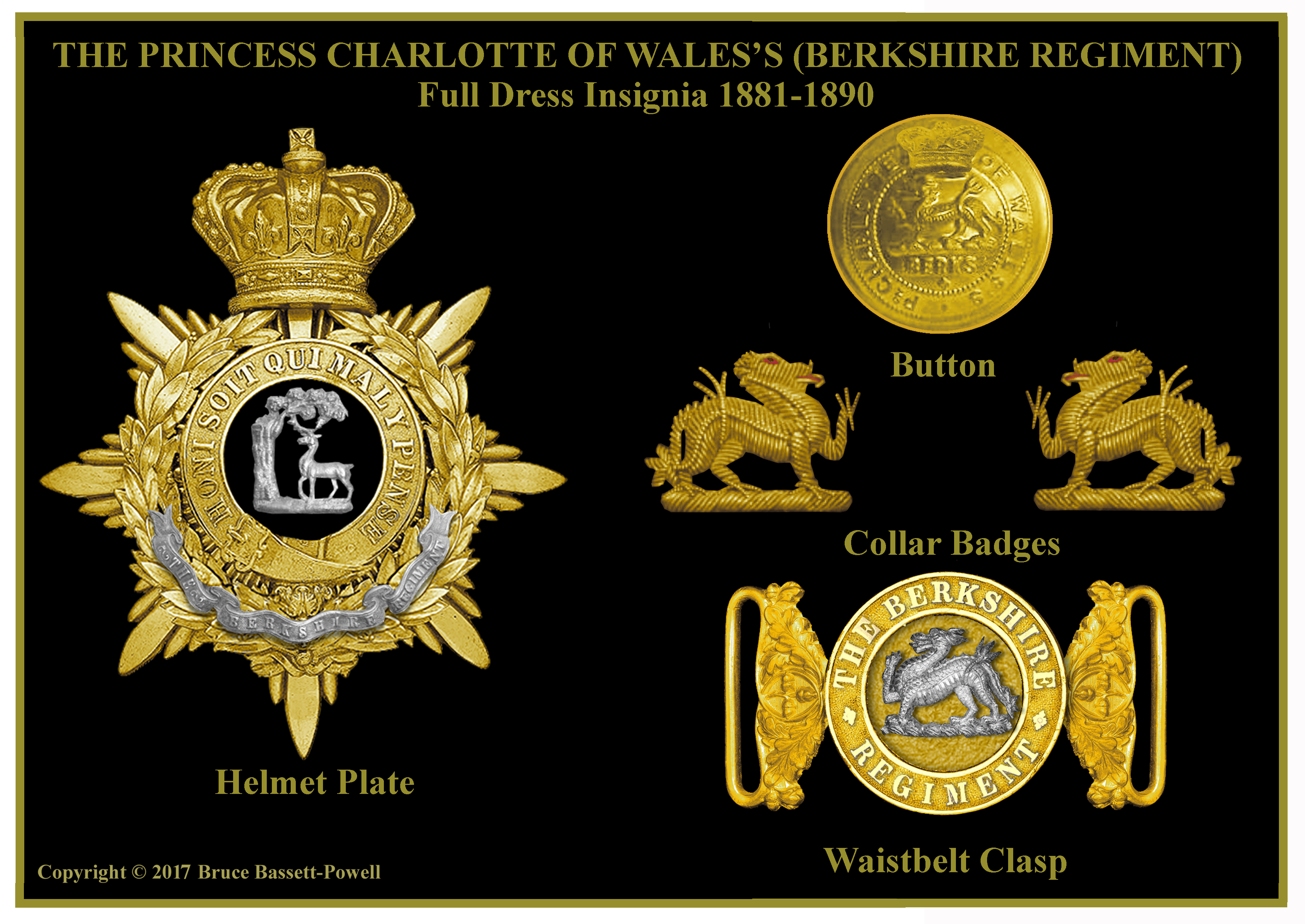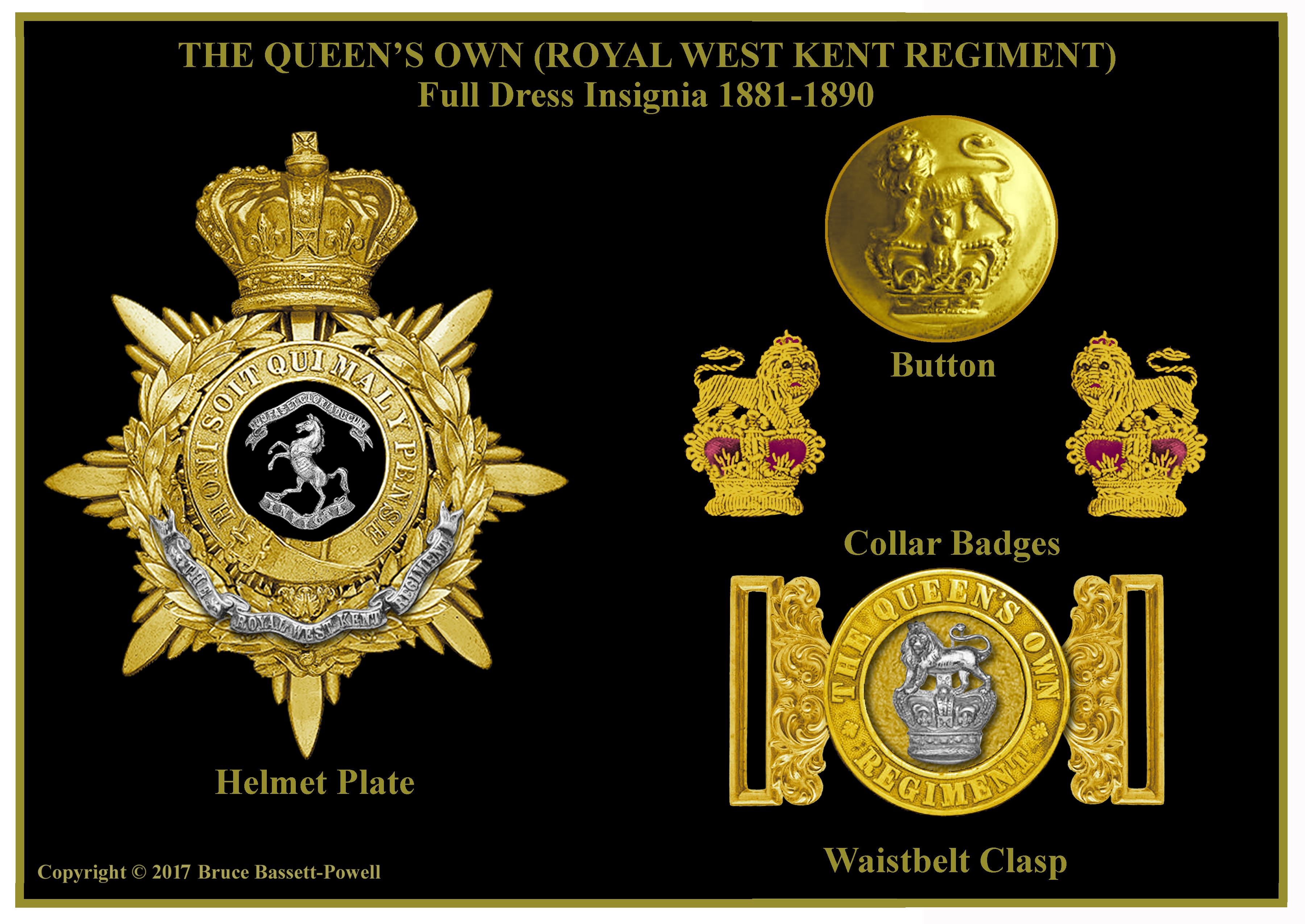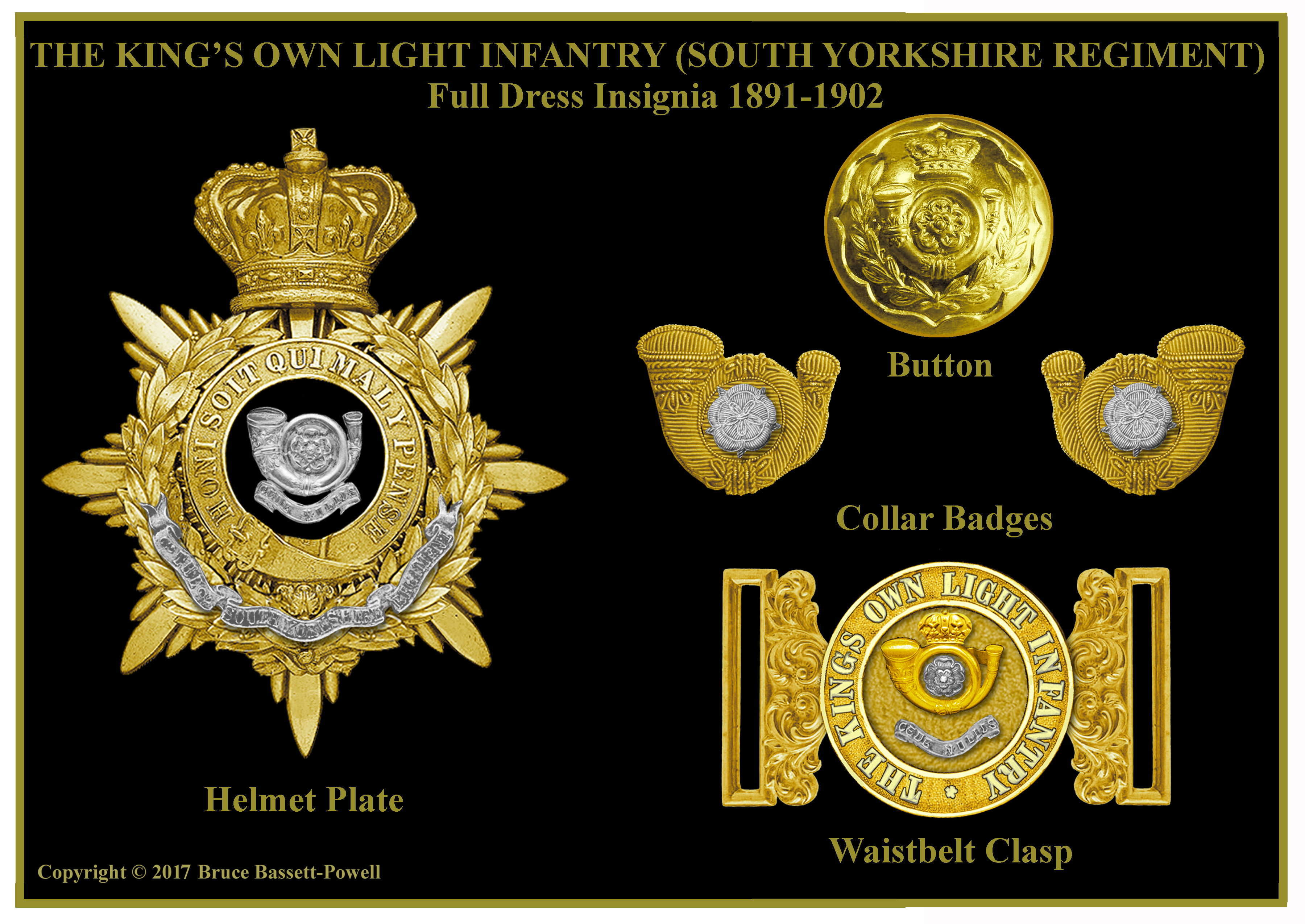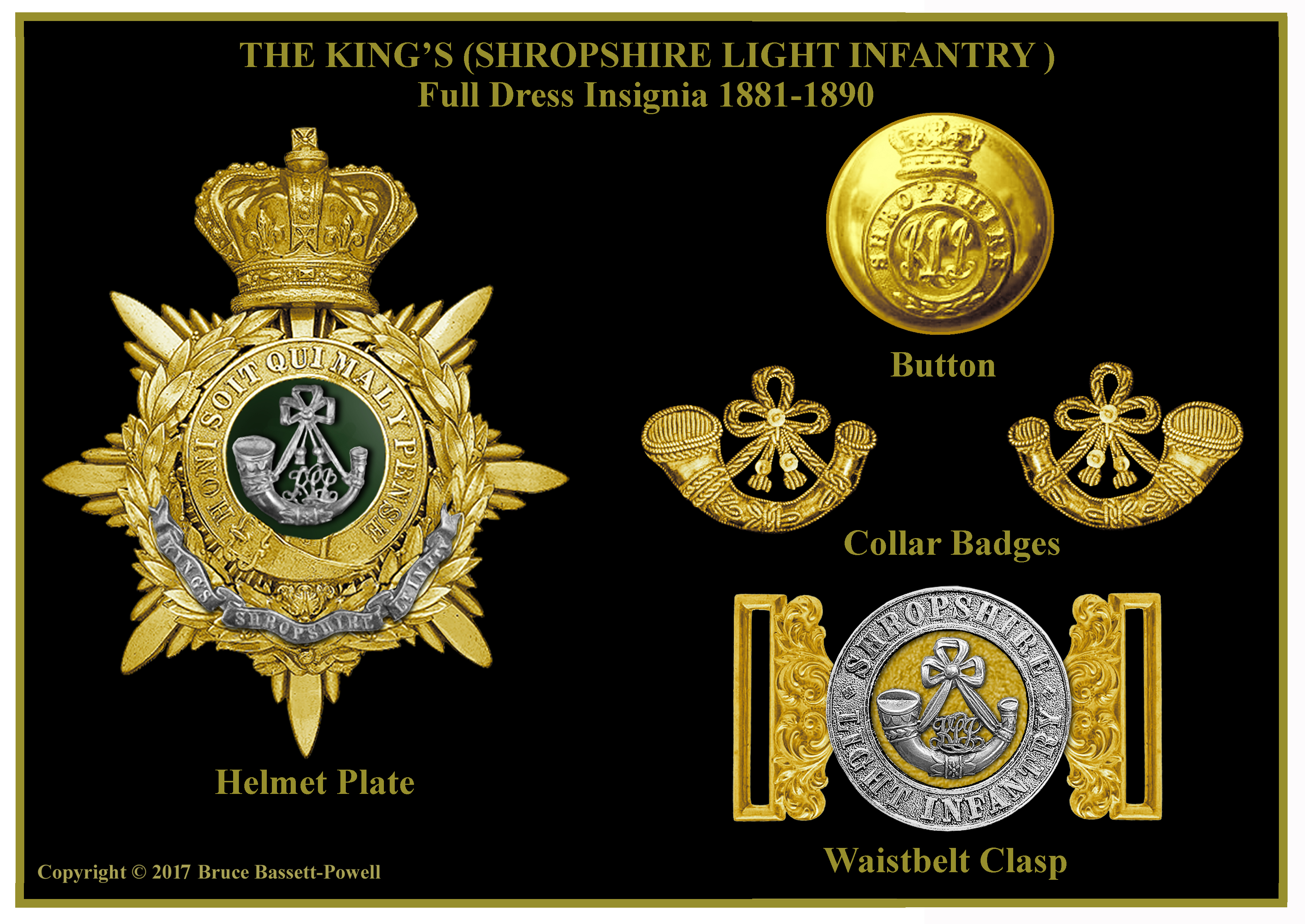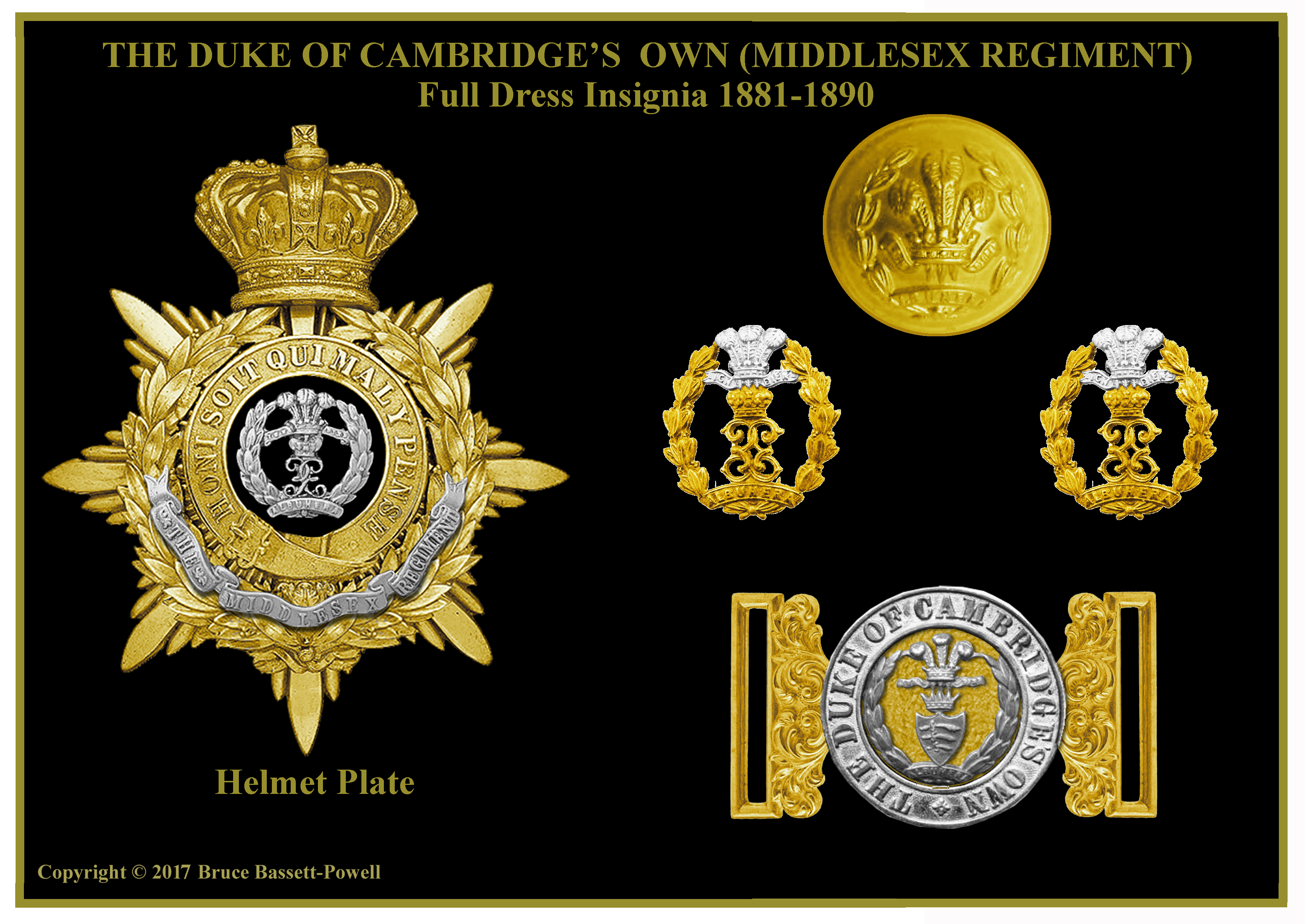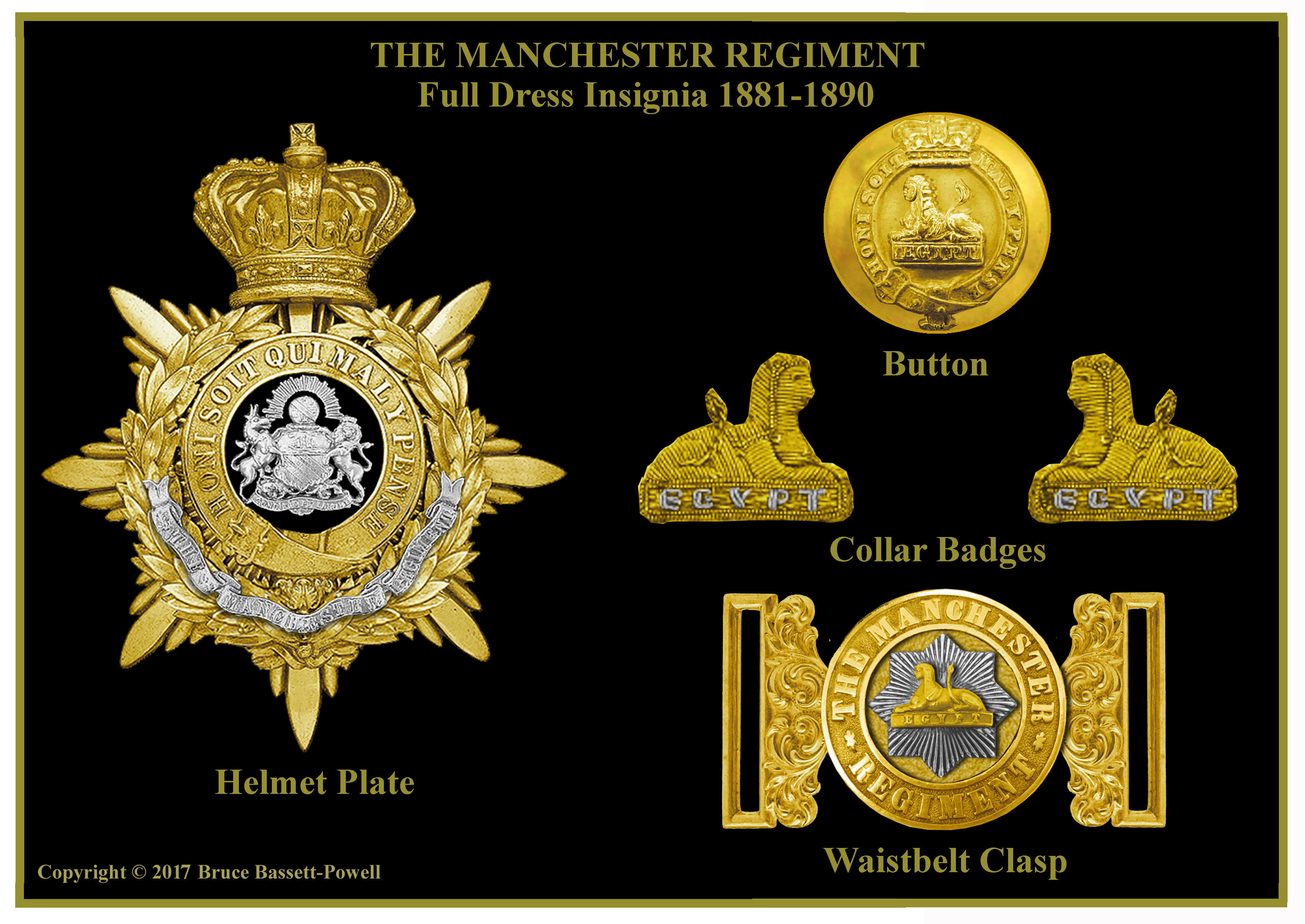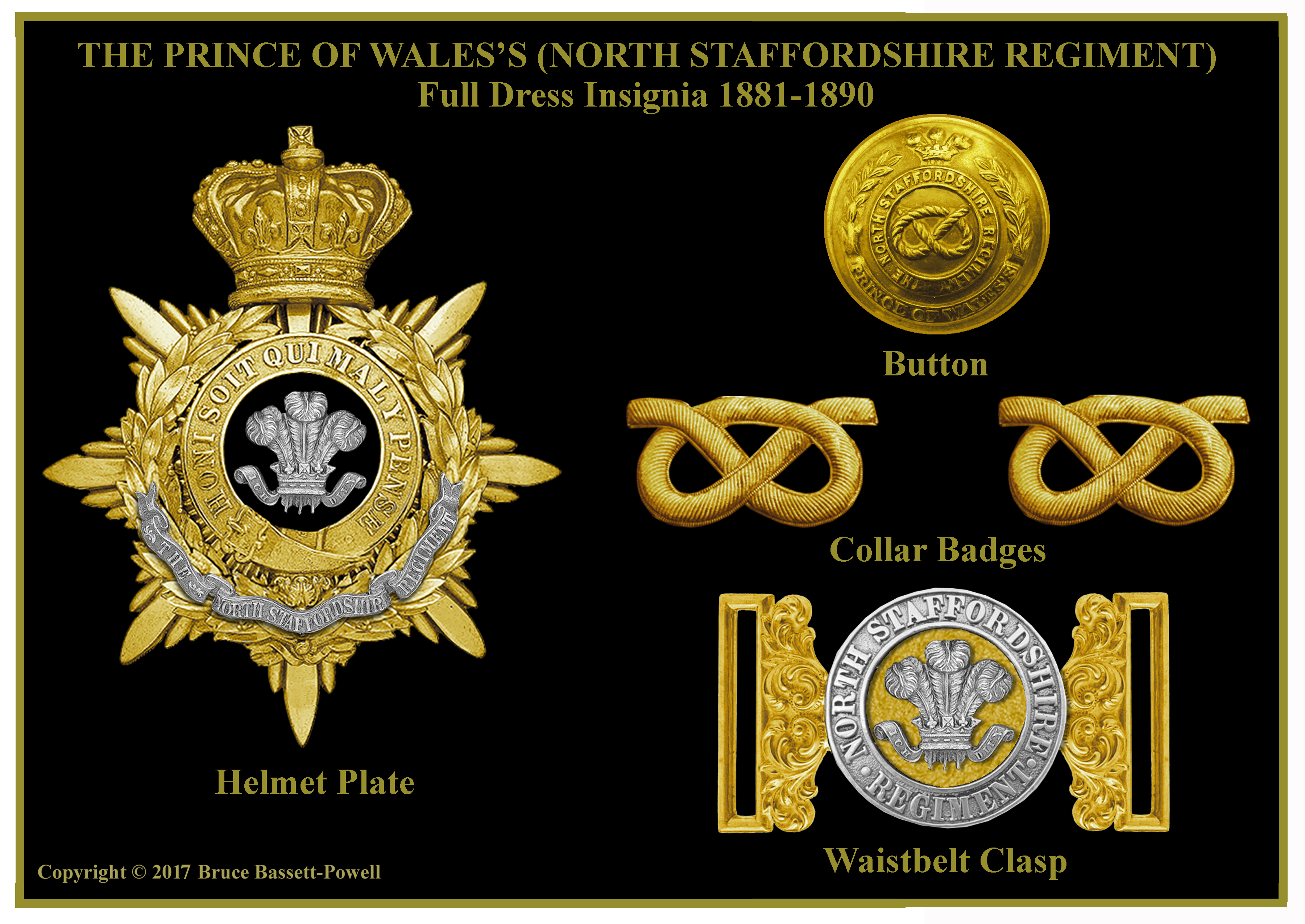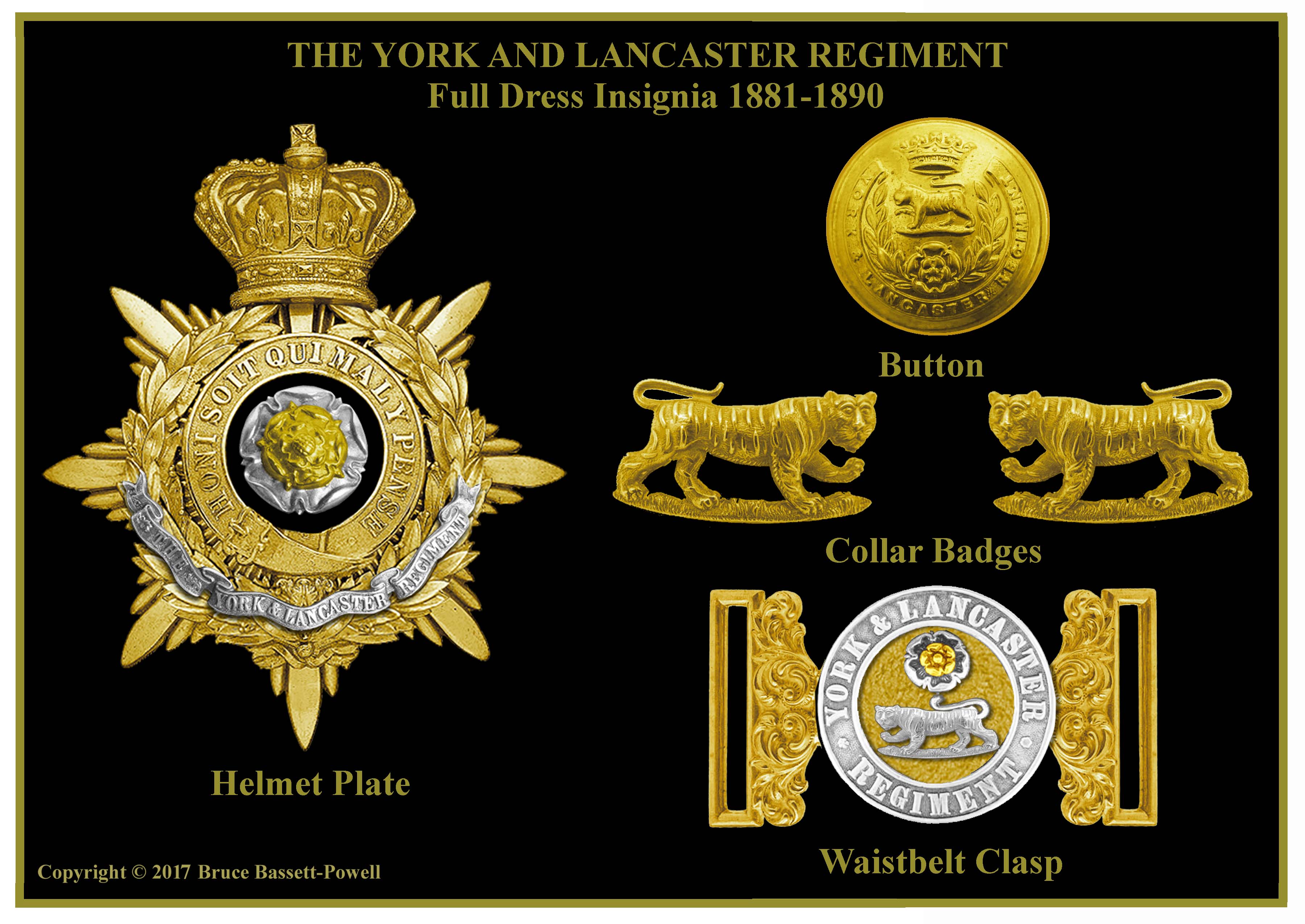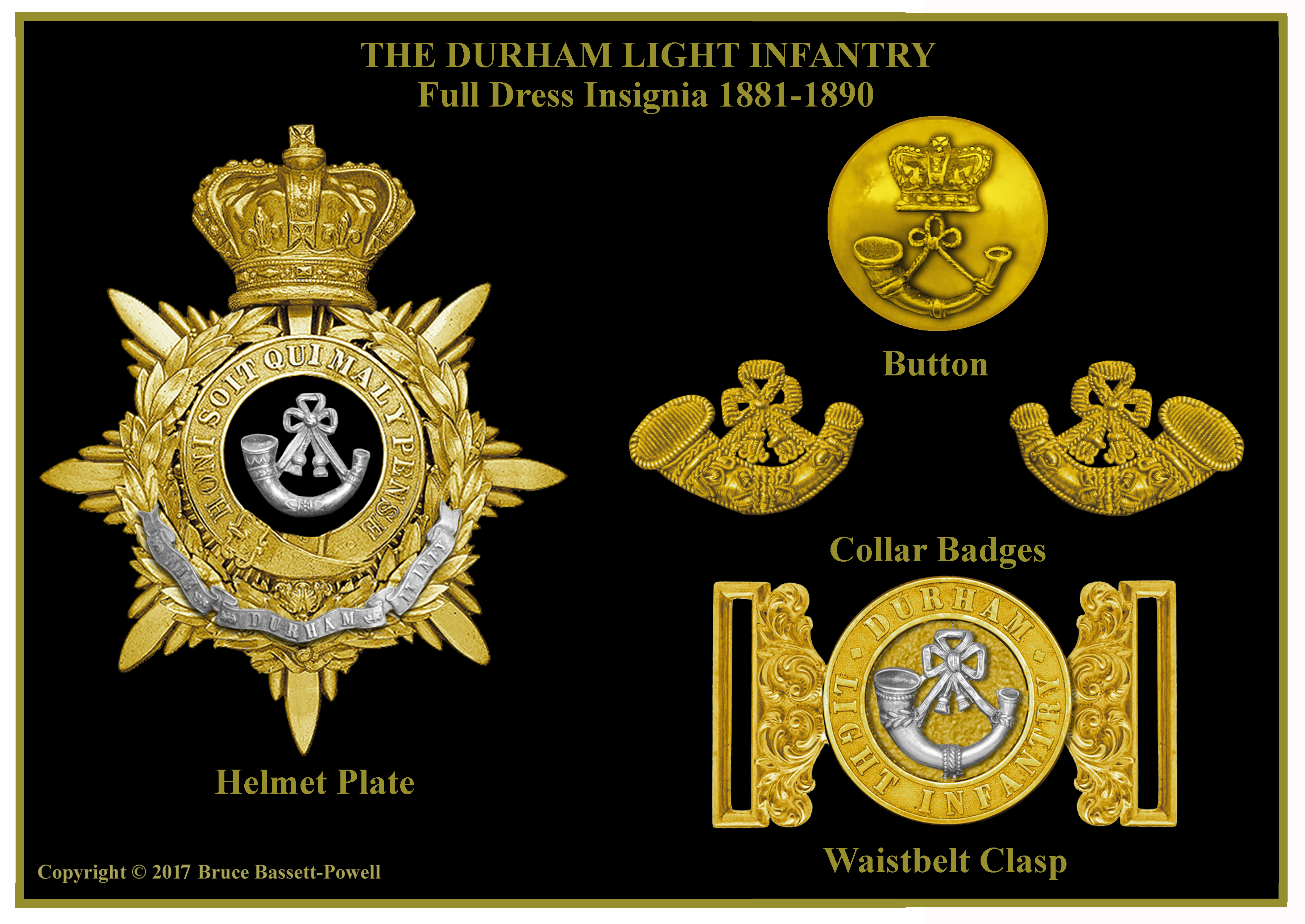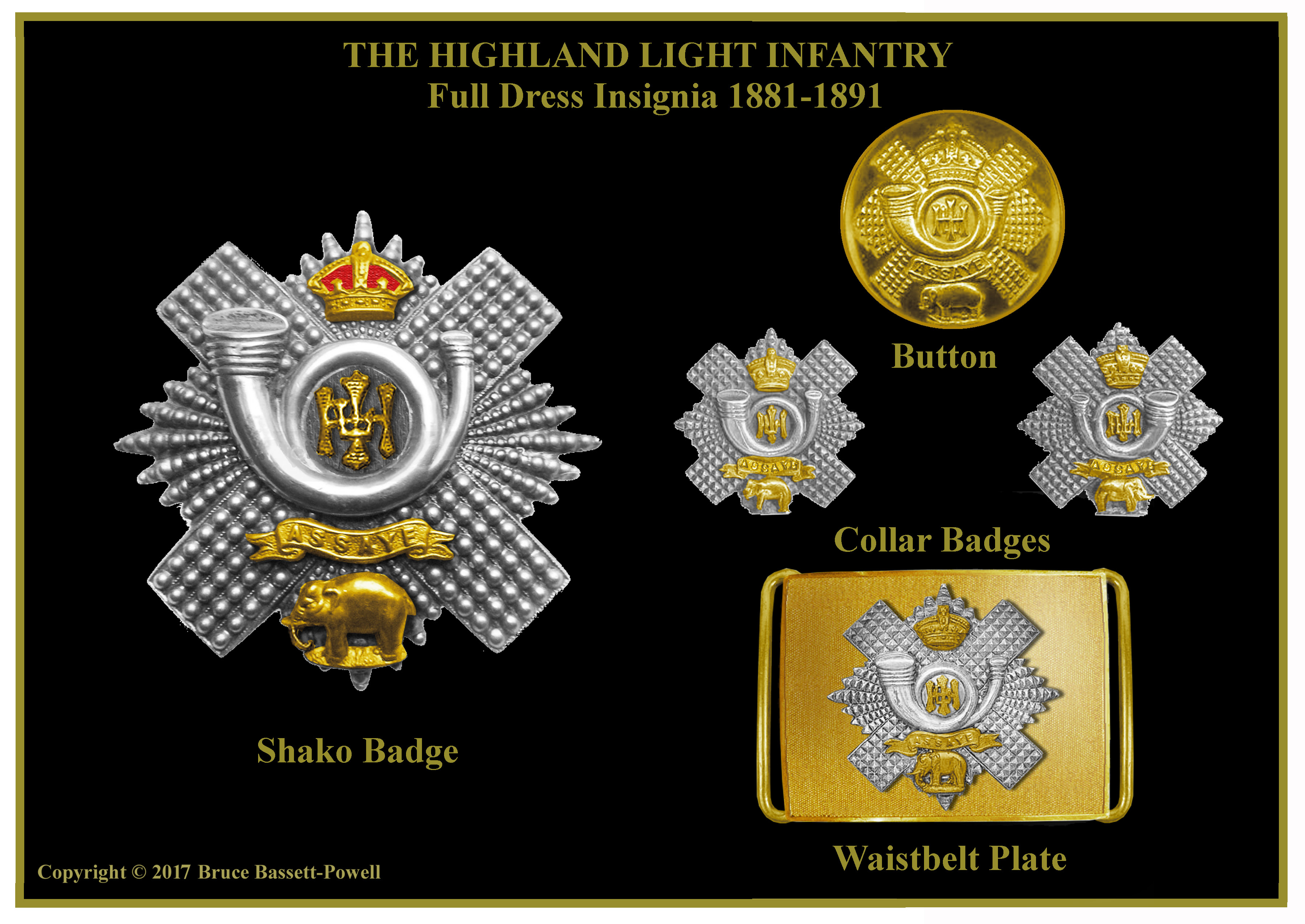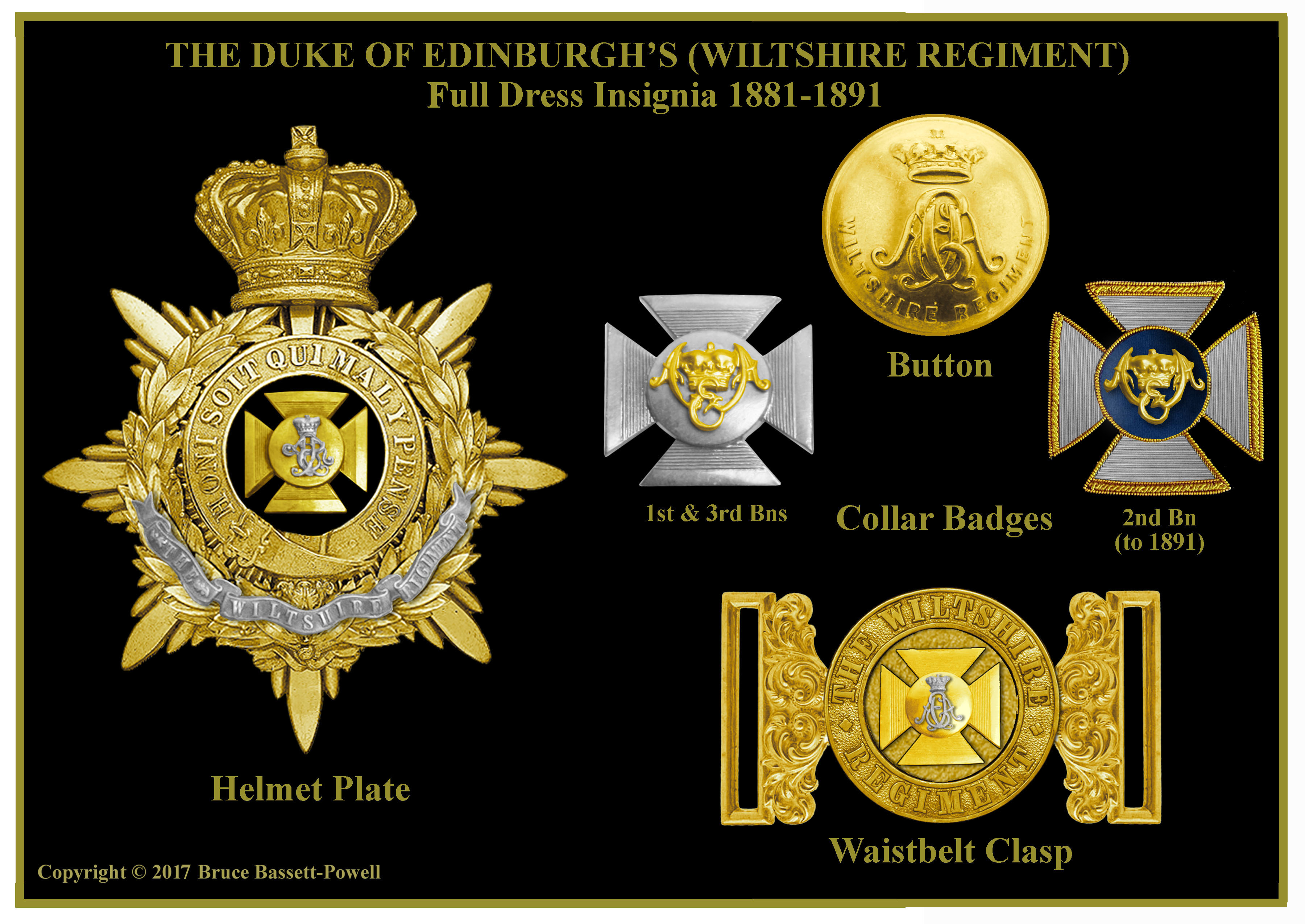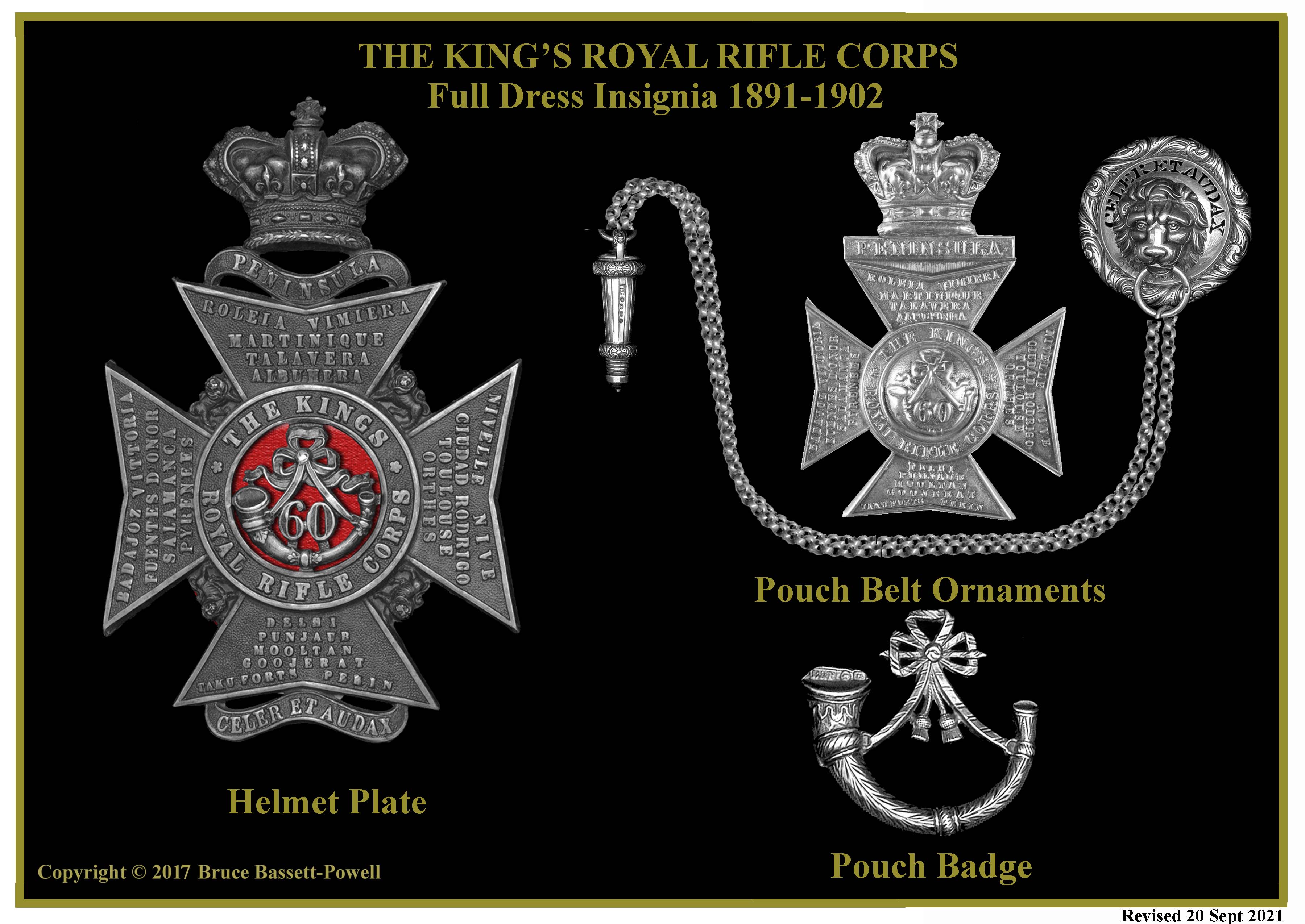Page 5
The Royal Berkshire Regiment (Princess Charlotte of Wales’s) Formerly the 49th and 66th Foot. The Dragon of China awarded to the 49th for service during the China War, 1840-1842. A Stag under an Oak Tree, which was the old badge of the Royal Berkshire Militia. Additional honours, such as a Naval Crown and Coiled Rope to commemorate sea service, were not worn on insignia until much later.
The Queen’s Own Royal West Kent Regiment Formerly the 50th and 97th Foot. The Royal Crest, which was an old badge of the 50th. Also the White Horse of Kent and the motto Invicta. Worn since 1881; had been the badge of the West Kent Militia. Additionally the Sphinx superscribed ‘Egypt’, conferred on the 50th for service in Egypt, 1801. Several, other honours, are not worn on insignia.
The King’s Own Yorkshire Light Infantry Formerly the 51st and 105th Foot. The White Rose of York, which was an old badge of the 51st. Also a French Bugle-horn that by regimental tradition was adopted after the battle of Waterloo to commemorate an engagement with French Chasseurs, although it was also a badge of the 105th. Additionally the Motto: Cede nullis, the motto of the 2nd Madras Light Infantry who were the pre-1861 forebears of the 105th.
The King’s Shropshire Light Infantry Formerly the 53rd and 85th Foot. A Bugle-horn with strings; adopted by the 85th when constituted light infantry in 1808. The title King’s Light Infantry, which was conferred on the 85th in 1821, it having previously been, from 1815, the Duke of York’s Own Light Infantry. The association with Shropshire came from the 53rd, which was nominally only, affiliated with the County from 1782.
The Middlesex Regiment Formerly the 57th and 77th Foot. The Prince of Wales’s Coronet, Plume and motto, which was granted to the 77th in 1810. Also the Duke of Cambridge’s Cypher and Coronet that was authorised as a badge to the 77th in 1876. Additionally a Laurel Wreath and the Honour ‘Albuhera’, which commemorates the outstanding gallantry of the 57th at the battle of that name. The Arms of the County of Middlesex, which was an old badge of the 57th and of the East Middlesex Militia.
The King’s Royal Rifle Corps Formerly the 60th of Foot. The Maltese Cross with Crown, which regimental history suggests was adopted from Hompesch’s Regiment from which the 5th Rifle Battalion of the 60th Regiment was largely formed and said to be inspired by the Bavarian War Medal. Additionally the Motto: Celer et Audax, said to be given as a reward for the services of the regiment before Quebec. Also a Bugle Horn, which had been the badge of the old 5th Rifle Battalion.
The Wiltshire Regiment (The Duke of Edinburgh’s) Formerly the 62nd and 99th Foot. The Duke of Edinburgh’s Coronet and Cypher, which was authorised to the 99th in 1874. A Maltese Cross, which had been an old badge of the 62nd and said to commemorate services in Sicily in 1806.
The Manchester Regiment Formerly the 63rd and 96th Foot. The Arms of the City of Manchester, which was adopted by the regiment from 1881. The Sphinx on a plinth inscribed ‘Egypt’, was given to an earlier 96th regiment in 1801 and authorised for the successor 96th in 1874. The Fleur-de-lis, which commemorates the services of the 63rd in the West Indies.
The North Staffordshire Regiment Formerly the 64th and 98th Foot. The Dragon of China, which commemorates the services of the 98th in the China War of 1842. Also the Prince of Wales’s Coronet, Plume and motto, which was authorised for the 98th in 1876, when the title of that name was conferred. Additionally the Stafford Knot, an old badge of the 64th Regiment and of the King’s Own Stafford Militia.
The Manchester Regiment Formerly the 63rd and 96th Foot. The Arms of the City of Manchester, which was adopted by the regiment from 1881. The Sphinx on a plinth inscribed ‘Egypt’, was given to an earlier 96th regiment in 1801 and authorised for the successor 96th in 1874. The Fleur-de-lis, which commemorates the services of the 63rd in the West Indies.
The York and Lancaster Regiment Formerly the 65th and 84th Foot. The Royal Tiger, which commemorates the services of the 65th in India between 1796 and 1819. The Union Rose, authorised as a badge in 1820 to reflect the association with the two Duchies that originally formed the regimental title of the 84th. Also a Coronet that was worn by the 84th since at least 1811.
The Durham Light Infantry Formerly the 68th and 106th Foot. A Light Infantry Bugle-horn, which was adopted by the 68th when constituted Light Infantry in 1808. A French Bugle-horn that was worn by the 2nd Bombay Light Infantry, the pre-1861 forebears of the 106th, which retained that same design.
The Highland Light Infantry Formerly the 71st and 74th Foot. A French Bugle-horn, which was an old badge of the 71st. Also the Elephant, which reflects the presentation of a third, honorary colour bearing an elephant, given as a reward for services of the 74th at the battle of Assaye. Additionally an Imperial Crown, as represented in the Order of the Star of India, which commemorates the long and distinguished services of the 74th in India. Also the Star of the Order of the Thistle.



